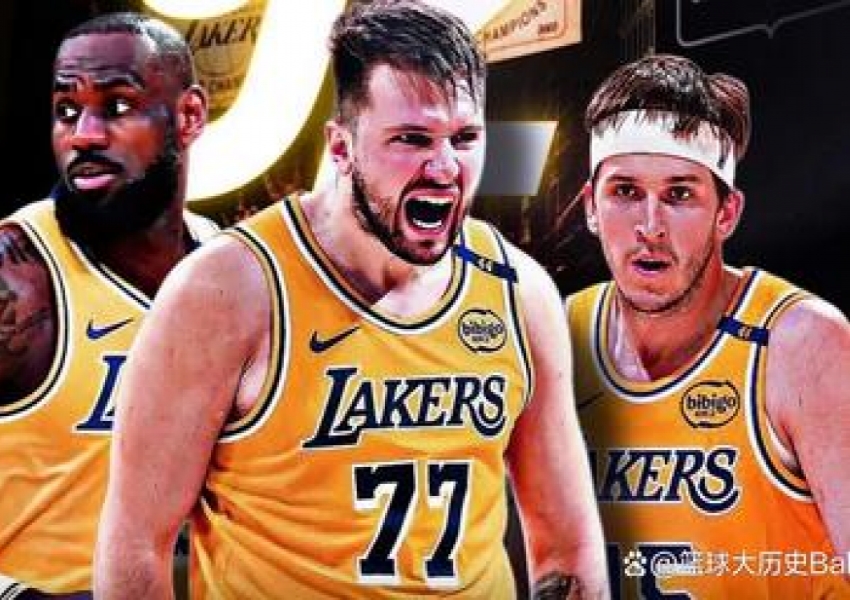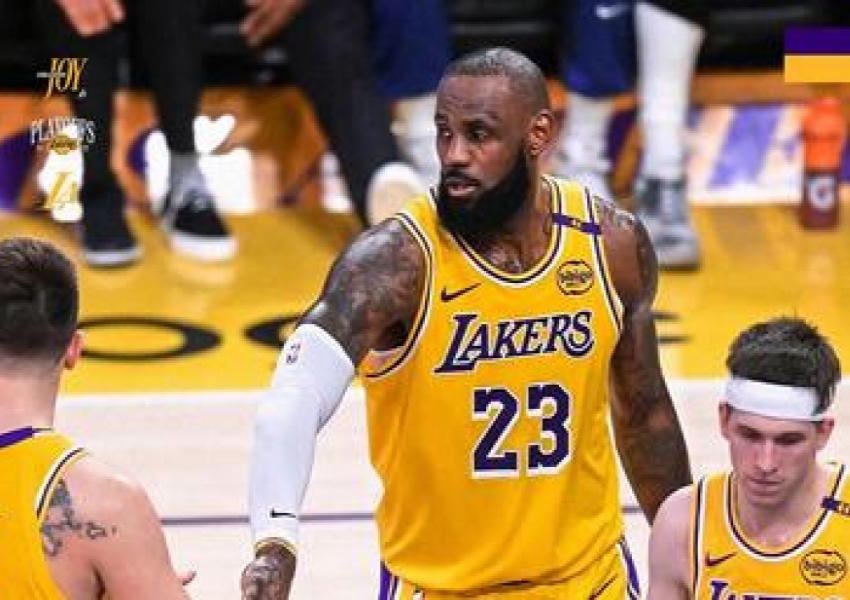First to Go? Lakers’ Trade Plans Signal the End of the Road for Dalton Knecht
The Los Angeles Lakers’ season has come to a crashing halt, and the front office has already shifted its focus to the summer. After falling 1–4 to the Minnesota Timberwolves in a disappointing first-round exit, it’s clear that roster flaws—not just coaching or individual performances—were the team’s undoing. Luka Dončić, LeBron James, and Austin Reaves had their moments, but the glaring hole in the middle of the lineup proved fatal. The Lakers, without a legitimate interior anchor, were repeatedly punished by the Wolves’ dominant frontcourt, with Rudy Gobert and Julius Randle (yes, as odd as that sounds, if he returns to form) taking full advantage.

General Manager Rob Pelinka didn’t mince words in the team’s season-ending press conference. Reflecting on the pre-deadline trade that sent starting center Jaxson Hayes packing in exchange for another ballhandler, Pelinka admitted: “When you trade your starting center at the deadline for a guard, problems are bound to follow. We saw those issues loud and clear. The top priority this offseason is size—real size—in the frontcourt.”

Pelinka doubled down on his belief in the new core of Dončić, James, and Reaves. “We have unprecedented confidence in Luka, LeBron, and Austin as our foundational trio. There’s a clear pathway forward with those three,” he said. “Now our job is to surround them with the right pieces—especially in the paint.”

That makes the Lakers’ offseason mission clear: retain their new Big Three and find a two-way center who can complement Dončić’s playstyle and bring balance to the lineup. But there’s a big problem: the market for quality bigs this summer is as thin as a California drought.
Among the few true free-agent or player-option centers available are Brook Lopez, Clint Capela, Myles Turner, Naz Reid, Steven Adams, Al Horford, Andre Drummond, Kevon Looney, John Collins, and Precious Achiuwa. Each has some major drawback: Lopez is aging and unreliable on defense, Capela has regressed heavily, Turner and Reid will command hefty contracts, and Horford may retire. The rest are situational fits at best, and none checks all the boxes the Lakers are looking for.
That leaves trades—and that’s where things get interesting.
Yahoo Sports insider Tom Haberstroh recently laid out five hypothetical trade scenarios for the Lakers to pursue frontcourt upgrades:
-
Trade Austin Reaves, Dalton Knecht, the 2031 first-round pick, and four first-round pick swaps for Jarrett Allen
-
Trade Reaves, Knecht, the 2031 first-rounder, and four swaps for Jaren Jackson Jr.
-
Trade Knecht, the 2032 first-round pick, and four swaps for Walker Kessler
-
Trade Knecht, Shake Milton, the 2031 first-round pick, and two swaps for Wendell Carter Jr.
-
Trade Knecht, Gabe Vincent, Milton, and two swaps for Isaiah Stewart and Lindy Waters III
Let’s be real—if the Lakers want a high-end, All-Star-level big like Allen or Jackson Jr., they’ll need to give up Reaves, which they clearly don’t want to do. Pelinka has labeled Reaves “untouchable,” grouping him with Luka and LeBron as non-negotiables.
That means the likely centerpiece of any deal becomes Dalton Knecht, the Lakers’ 17th overall pick from last summer’s draft—and if you read between the lines, it feels like his departure is all but certain.
Even before the playoffs, Knecht had already been dangled in trade discussions. He was part of the package that was nearly sent to the Hornets at the deadline, only for the deal to fall through. He returned to the lineup and responded with maturity and poise, even dropping 32 points against the Denver Nuggets late in the season. But come playoff time, rookie head coach JJ Redick opted to give him multiple DNPs, a telling sign of his role—or lack thereof—moving forward.
Knecht's rookie year stat line was solid: 78 games, 19.2 minutes per game, 9.1 points, 2.8 rebounds, 0.8 assists, on shooting splits of 46.1/37.6/76.2. His true shooting percentage was a respectable 59.8%. Even more encouraging: after the trade deadline passed and his name was pulled from the block, he elevated his play. His three-point percentage jumped from 35.8% to 40.8% and in March, he averaged 10.1 points on 42.0% from deep. For a rookie shooter, those numbers scream NBA-ready contributor.
But the numbers don’t matter as much as the math: if the Lakers want a starting-caliber center, someone has to go—and with Reaves off the table, it’s clear who the expendable piece is.
Whether it’s Kessler in Utah—a name that’s long been linked to L.A.—or someone like Dallas’ Daniel Gafford, who already has chemistry with Dončić and hinted at a reunion ("We’ll play together again," Luka reportedly told him postgame), the Lakers will need to pay. And in these conversations, Knecht becomes the currency.
The Gafford angle is particularly intriguing. He helped anchor Dallas’ run to the Finals last season and could become a Slovenian national through FIBA naturalization, further aligning him with Dončić both internationally and professionally. With Dereck Lively II emerging in Dallas, the Mavs might be open to moving Gafford for the right return. The relationship is there. The fit is seamless. The need is urgent.
But even in the best-case scenario, Knecht’s inclusion feels unavoidable. He's the necessary sacrifice to elevate the ceiling of this team in the Dončić era.
And that, perhaps, is the cruel irony of it all: the arrival of Luka Dončić—a move that gave the Lakers a long-term superstar successor to LeBron—might also mark the end of the road for one of the franchise’s most promising rookies in recent memory. The moment Dončić touched down in Los Angeles, Knecht's Lakers career was probably living on borrowed time.
It’s a shame in some ways. Knecht profiles as a perfect fit next to Dončić and James: a floor-spacer, movement shooter, and quick-trigger threat who doesn’t need the ball to be effective. His value in a modern offense is clear. But value on the roster isn’t always the same as value on the trade market—and right now, he’s one of the Lakers’ few movable assets that can net them what they desperately lack.
Pelinka faces the toughest offseason of his tenure. He has the pieces to build a real contender around Luka, but doing so means tough decisions. In that puzzle, Dalton Knecht might be the first piece that has to move.
The NBA is a ruthless business, and Dalton Knecht is learning that faster than most. From draft night darling to trade chip in under 12 months—such is life when your team lands a generational talent out of nowhere.
Copyright Statement:
Author: focusnba
Source: FocusNBA
The copyright of this article belongs to the author. Reproduction is not allowed without permission.
Recommended Blog
- 0+0+0+0+0! Just How Bad is Kyle Kuzma Right Now?
- Devastating 75-Point Loss! Morant vs. Gilgeous-Alexander: Will There Be a Miracle?
- Truly Impressive! A Late-Blooming Talent Delivers: From 12+6+4 to 20+9+9, $30 Million Contract Locked
- Official Announcement! Lakers Extend Rob Pelinka's Contract! His Legendary Moves Go Beyond Luka Doncic!
- The Shorter the News, the Bigger the Event! Is the Kings' Big 3 on the Chopping Block?
- +31 Plus-Minus! Klay's Redemption Game, Can Mavericks Pull Off a Play-In Miracle?
- Countdown to Zion's Departure: Does 24-Year-Old Zion Williamson Still Have Value?
- No Regrets! Mavs Management Responds Again on Doncic Trade, Still Standing Firm?
- What Defines Genius? From Guard to Center, Overcoming a 50% Decrease in Talent, Yet Still Becoming a Top NBA Star
- Best Sixth Man? Just How Good Is Payton Pritchard, Who Earns $6.7 Million a Year?